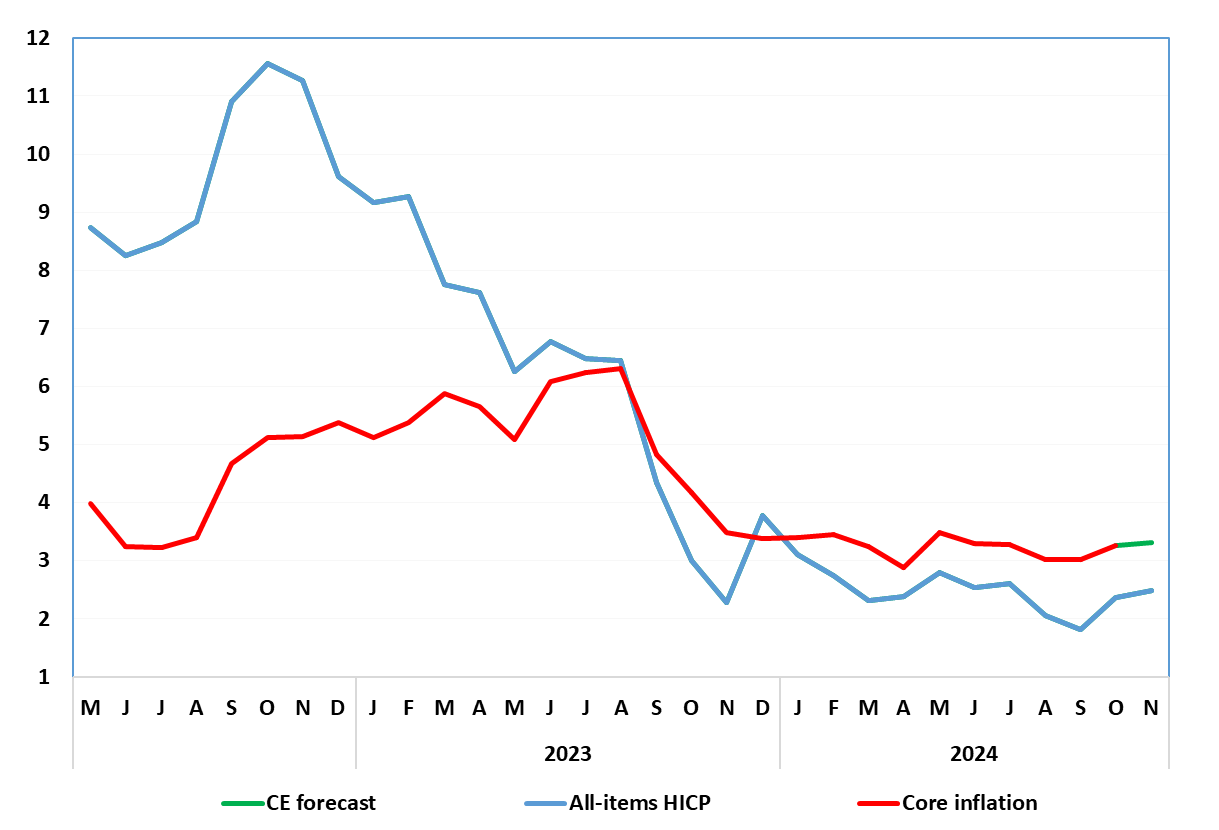German Data Preview (Nov 28): Services Inflation Persists?
As we have repeatedly underlined, Germany’s disinflation process continues but unevenly. After July saw the headline HICP rate rise and unexpected 0.1 ppt to 2.6%, unwinding a third of fall seen in June, it plummeted to a 41-month low of 2.0% in August, and then down to 1.8% last month, below the ECB target and well below expectations. This was in spite of apparently stable or resilient services inflation (Figure 1). The latter continued to be the case in the preliminary October reading where there were also energy related base effects and fuel price rises taking the headline up a much higher than expected 2.4%, and with a higher core. A further, but more modest (ie 0.1 ppt), rise is in store for November, again largely based around energy base effects but where services inflation (which rose afresh in October may abate somewhat. As a result, the core may remain at 3.3% at least on a CPI basis but still with friendly short-term price dynamics!
Figure 1: Services Inflation Persistence Evident Still But Energy Main Swing Factor of Late?

Source: German Federal Stats Office, CE, % chg y/y
While a further rise in the next month beckons, again due to energy base effects, survey data are pointing not only to more real economy weakness but significant falls in cost and output price pressures.
Figure 2: Adjusted Core Rate Still Falling?

Source: German Federal Stats Office, CE, % chg m/m adjusted and smoothed
Regardless, looking ahead, the core disinflation trend is seen continuing, mainly due to slower core goods and energy prices. Even so, while headline inflation is now at 2% it may perk back even above 2.5% by end-year due to energy base effects. The ECB will have to take note although the hawks on the Council will point to still apparently resilient services inflation, but where the doves may counter by pointing to recent much softer real economy signals. Indeed, PMI survey data pointed to both weaker cost pressures and activity signs. Regardless, there are still more signs of weaker underlying price pressures, most notably in more short-term data, ie less affected by base effects. Indeed, core pressures on this basis are consistent with below-target inflation (Figure 2).